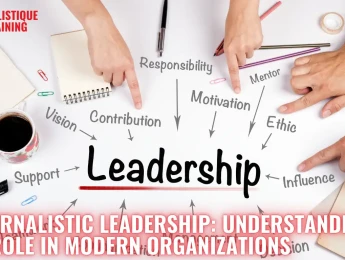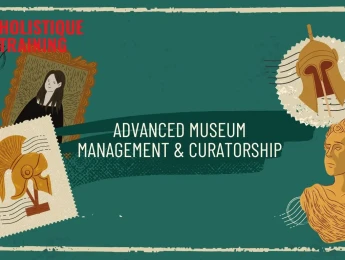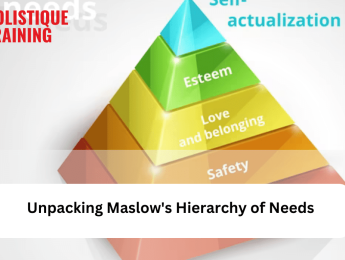Introduction
Autocratic leadership, often referred to as authoritarian leadership, is defined by its centralization of decision-making authority and control within a single leader. This leadership style is characterized by a high level of control, where the leader sets policies, procedures, and objectives without input from team members. Communication is predominantly one-directional, from the leader to the subordinates, with minimal feedback or discussion. This approach can be particularly effective in high-pressure environments where swift decision-making is essential. However, the lack of involvement from team members often stifles creativity and innovation, leading to potential issues with morale and job satisfaction. Despite these challenges, autocratic leadership can be highly effective in situations requiring firm direction and rapid responses.
Characteristics of Autocratic Leadership
Autocratic leadership, often referred to as authoritarian leadership, is defined by a set of distinctive characteristics that centralize power and decision-making in the hands of a single leader. This leadership style is marked by:
- High Level of Control and Supervision: The leader dictates policies, procedures, and objectives without input from team members.
- Centralized Decision-Making: All decisions are made by the leader, with no involvement from subordinates.
- Strict Authority: The leader maintains firm control over the team, closely monitoring compliance with directives.
- One-Way Communication: Communication primarily flows from the leader to the subordinates, with minimal room for feedback or discussion.
- Clear and Direct Instructions: Autocratic leaders provide unambiguous guidance on roles, responsibilities, and expectations.
- Efficient Task Execution: The clarity of directives can lead to swift and effective task completion, beneficial in high-pressure environments.
- Stifled Creativity: The lack of team input can suppress innovation and discourage employees from contributing ideas or expressing concerns.
- Potential for Low Morale: The rigid structure and top-down approach can result in feelings of undervaluation and disconnect among team members.
Despite these drawbacks, autocratic leadership can be highly effective in scenarios that require rapid decision-making and strict adherence to procedures, such as military operations or during crises where a decisive leader can guide the organization through turbulent times.
Pros of Autocratic Leadership
Autocratic leadership, despite its often criticized rigid and controlling nature, offers several significant advantages that can be beneficial in specific contexts. One of the primary pros of autocratic leadership is the ability to make swift and decisive decisions. Since the leader holds all the decision-making power, there is no need for lengthy consultations or deliberations, which can be crucial in time-sensitive situations or during crises. This centralized approach ensures a clear and unambiguous chain of command, where roles and responsibilities are well-defined, minimizing confusion and enhancing organizational efficiency. Autocratic leadership can also lead to increased productivity, as team members are given precise instructions and are expected to follow them without question, allowing for a streamlined workflow and reduced downtime. In environments where compliance with rules and procedures is critical, such as in manufacturing, construction, or military operations, autocratic leadership ensures that standards are consistently met, thereby maintaining high levels of quality and safety. Moreover, in scenarios where the leader possesses a high level of expertise and knowledge, their authoritative decisions can guide the team towards success, leveraging their experience and strategic vision. The clear directives provided by autocratic leaders can also foster a sense of security among team members, who may appreciate the predictability and structure offered by this leadership style. Some specific advantages include:
- Quick Decision-Making: Eliminates the need for lengthy consultations, allowing for rapid responses.
- Clear Chain of Command: Well-defined roles and responsibilities reduce confusion.
- Increased Productivity: Precise instructions streamline workflow and reduce downtime.
- High Compliance: Ensures adherence to standards in critical environments.
- Utilization of Expertise: Leverages the leader’s knowledge and strategic vision.
- Predictability and Structure: Provides security and clarity for team members.
Cons of Autocratic Leadership
Autocratic leadership, while effective in certain scenarios, comes with a range of drawbacks that can hinder organizational and employee growth. One of the most significant cons of autocratic leadership is the potential to stifle creativity and innovation. By centralizing decision-making power and limiting input from team members, autocratic leaders may miss out on valuable insights and creative solutions that could arise from a more collaborative approach. This can lead to a stagnant work environment where employees feel their contributions are undervalued. Additionally, the authoritative nature of autocratic leadership can result in low employee morale and engagement. Team members who feel their opinions are disregarded may become demotivated, leading to decreased job satisfaction and higher turnover rates. This leadership style can also create a dependency culture, where employees rely heavily on the leader for direction and decision-making, which can hinder the development of individual initiative and problem-solving skills. The lack of open communication and feedback channels in autocratic leadership can lead to compliance issues, as employees may not feel comfortable voicing concerns or challenges, resulting in unresolved problems that could impact performance. Furthermore, the high level of control and supervision associated with autocratic leadership can foster a stressful work environment, potentially leading to burnout and decreased productivity over time. Some specific disadvantages include:
- Limited Creativity and Innovation: Centralized decision-making restricts the flow of new ideas.
- Low Employee Morale and Engagement: Disregard for team input can lead to demotivation and job dissatisfaction.
- High Turnover Rates: Authoritative leadership can drive employees to seek more inclusive workplaces.
- Dependency Culture: Over-reliance on the leader stifles individual initiative and development.
- Compliance Issues: Lack of open communication can result in unaddressed problems.
- Stressful Work Environment: High control and supervision can lead to employee burnout.
These drawbacks highlight the importance of considering the context and specific needs of the organization when adopting an autocratic leadership style, ensuring that its implementation does not compromise long-term growth and employee well-being.
Comparing Autocratic Leadership with Other Leadership Styles
Autocratic vs. Democratic Leadership
Democratic leadership, also known as participative leadership, stands in stark contrast to autocratic leadership. While autocratic leaders make decisions unilaterally, democratic leaders actively seek input and consensus from their team members. This inclusive approach encourages collaboration, fosters a sense of ownership among employees, and leverages diverse perspectives to enhance decision-making. Democratic leadership tends to boost morale and engagement, as team members feel valued and heard. However, the decision-making process in democratic leadership can be slower, potentially leading to delays in action. In contrast, autocratic leadership's centralized decision-making can lead to quicker resolutions, which is beneficial in time-sensitive situations. Yet, this efficiency comes at the cost of reduced creativity and innovation due to the lack of diverse input.
Key Differences:
Decision-Making Process:
- Autocratic: Centralized, leader makes all decisions.
- Democratic: Decentralized, involves team input and consensus.
Employee Morale and Engagement:
- Autocratic: Can lead to low morale and disengagement.
- Democratic: Typically boosts morale and engagement.
Creativity and Innovation:
- Autocratic: Limited due to lack of diverse input.
- Democratic: Enhanced through collaborative efforts.
Efficiency and Speed:
- Autocratic: Quick decision-making.
- Democratic: Slower due to the need for consensus.
Autocratic vs. Laissez-Faire Leadership
Laissez-faire leadership represents the opposite end of the spectrum from autocratic leadership. Laissez-faire leaders adopt a hands-off approach, granting significant autonomy to team members to make decisions and manage their work. This leadership style can foster creativity and innovation, as employees have the freedom to explore new ideas and solutions without rigid oversight. However, the lack of direction and control in laissez-faire leadership can lead to confusion, inefficiency, and a lack of accountability if team members are not self-motivated or disciplined. Autocratic leadership, with its clear directives and strong control, ensures that tasks are completed efficiently and according to standards, but at the cost of suppressing individual initiative and innovation.
Key Differences:
Control and Autonomy:
- Autocratic: High level of control, minimal autonomy for team members.
- Laissez-Faire: Minimal control, high autonomy for team members.
Creativity and Innovation:
- Autocratic: Limited by strict control and directives.
- Laissez-Faire: Encouraged through freedom and flexibility.
Accountability and Direction:
- Autocratic: High accountability and clear direction.
- Laissez-Faire: Potential for lack of accountability and direction.
Efficiency and Structure:
- Autocratic: Efficient and structured.
- Laissez-Faire: Can be inefficient and unstructured if not managed well.
Autocratic vs. Transformational Leadership
Transformational leadership focuses on inspiring and motivating team members to achieve their full potential and drive organizational change. Unlike autocratic leadership, which relies on authority and control, transformational leaders empower their teams, encourage innovation, and foster a shared vision. This leadership style is associated with high levels of employee engagement, satisfaction, and performance, as it emphasizes personal development and the pursuit of excellence. However, transformational leadership requires a high level of emotional intelligence, charisma, and effective communication skills, which may not be as straightforward as the clear, directive approach of autocratic leadership. While autocratic leadership can quickly implement decisions and maintain order, transformational leadership nurtures a more dynamic and adaptive organizational culture.
Key Differences:
Motivation and Inspiration:
- Autocratic: Relies on authority and control.
- Transformational: Inspires and motivates through shared vision.
Employee Development:
- Autocratic: Limited focus on personal development.
- Transformational: Emphasizes personal growth and development.
Engagement and Satisfaction:
- Autocratic: Can lead to low engagement and satisfaction.
- Transformational: High levels of engagement and satisfaction.
Change and Innovation:
- Autocratic: Less adaptable to change, limited innovation.
- Transformational: Fosters innovation and adaptability.
Table 1: key differences between autocratic leadership and other leadership styles
Aspect | Autocratic Leadership | Democratic Leadership | Laissez-Faire Leadership | Transformational Leadership |
Decision-Making Process | Centralized, the leader makes all decisions. | Decentralized, involves team input and consensus. | Team members make decisions independently. | Leader inspires and motivates, encourages team input. |
Employee Morale and Engagement | Can lead to low morale and disengagement. | Typically boosts morale and engagement. | Morale can be high if team members are self-motivated. | High levels of engagement and satisfaction. |
Creativity and Innovation | Limited due to lack of diverse input. | Enhanced through collaborative efforts. | Encouraged through freedom and flexibility. | Fostered through empowerment and a shared vision. |
Efficiency and Speed | Quick decision-making, efficient execution. | Slower due to the need for consensus. | Can be inefficient and unstructured if not managed well. | Dynamic and adaptive, but requires effective communication. |
Control and Autonomy | High level of control, minimal autonomy for team members. | Balance of control and autonomy, with team input. | Minimal control, high autonomy for team members. | Encourages autonomy within a shared vision and goals. |
Accountability and Direction | High accountability and clear direction. | Shared accountability with team involvement. | Potential for lack of accountability and direction. | Clear direction with a focus on personal development. |
Motivation and Inspiration | Relies on authority and control. | Engages through collaboration and shared goals. | Motivation is self-driven, with minimal external influence. | Inspires through vision and personal development opportunities. |
Tips for Implementing Autocratic Leadership Effectively
Implementing autocratic leadership effectively requires a careful balance of authority, communication, and strategic oversight to ensure that the advantages of this style are maximized while mitigating its potential drawbacks. One of the key tips is to maintain clear and consistent communication. While autocratic leadership inherently involves top-down communication, ensuring that directives are understood and that team members know their roles and responsibilities is crucial. Leaders should also provide regular feedback and acknowledge team members' efforts to maintain morale and motivation. It is essential to establish and enforce well-defined rules and procedures to create a structured and efficient working environment. However, flexibility should be exercised when necessary, especially in response to unforeseen challenges or changes. Building a team of competent and trustworthy individuals is vital, as reliance on a capable workforce ensures that directives are executed effectively and efficiently. Additionally, leaders should strive to demonstrate their expertise and decision-making skills, as this fosters respect and trust among team members. Implementing mechanisms for monitoring progress and performance without micromanaging is also important; this can be achieved through regular check-ins and performance metrics. While autocratic leaders do not typically seek input, it can be beneficial to occasionally solicit feedback to identify potential issues and make informed decisions. Finally, leaders should be aware of the potential for burnout and disengagement among employees and take proactive steps to address these issues, such as offering support and recognizing accomplishments.
Key Tips:
Maintain Clear and Consistent Communication:
- Ensure directives are understood and roles are clearly defined.
- Provide regular feedback and acknowledge efforts.
Establish and Enforce Well-Defined Rules and Procedures:
- Create a structured and efficient working environment.
- Exercise flexibility when necessary.
Build a Competent and Trustworthy Team:
Rely on capable individuals to execute directives effectively.
Demonstrate Expertise and Decision-Making Skills:
Foster respect and trust through competent leadership.
Implement Monitoring Mechanisms:
Use regular check-ins and performance metrics to track progress.
Solicit Occasional Feedback:
Identify potential issues and make informed decisions.
Address Burnout and Disengagement:
Offer support and recognize accomplishments to maintain morale.
Strategies to Mitigate the Drawbacks of Autocratic Leadership
Mitigating the drawbacks of autocratic leadership requires strategic adjustments and proactive measures to ensure that the leadership style remains effective without negatively impacting team morale, creativity, and overall performance. One effective strategy is to balance authority with empathy by showing genuine concern for the well-being and professional growth of team members. This involves being approachable and listening to employees’ concerns, even if their input doesn’t directly influence decision-making. Another strategy is to clearly articulate the rationale behind decisions and directives. By explaining the reasons for certain actions, leaders can foster a sense of transparency and understanding, which can help reduce resistance and increase buy-in from team members. Incorporating occasional opportunities for feedback can also mitigate some of the rigidity associated with autocratic leadership. This doesn’t mean relinquishing control but rather providing a platform for employees to voice their opinions and suggestions, which can be valuable for identifying blind spots and improving processes. Delegating certain responsibilities to trusted team members can also distribute the workload more evenly and prevent burnout, while simultaneously developing their skills and fostering a sense of ownership. Implementing a structured reward system to recognize and incentivize high performance can help maintain motivation and morale. Additionally, leaders should make an effort to stay open to innovation by occasionally encouraging creative problem-solving within the established framework. Finally, promoting continuous learning and development ensures that both the leader and the team remain adaptable and competent in the face of evolving challenges.
Key Strategies:
Balance Authority with Empathy:
- Show genuine concern for team members' well-being and growth.
- Be approachable and listen to employees' concerns.
Clearly Articulate Decision Rationale:
Explain the reasons behind decisions to foster understanding and reduce resistance.
Incorporate Feedback Opportunities:
Provide a platform for employees to voice opinions and suggestions.
Delegate Responsibilities:
Distribute workload to prevent burnout and develop team members' skills.
Implement a Reward System:
Recognize and incentivize high performance to maintain motivation.
Stay Open to Innovation:
Encourage creative problem-solving within the established framework.
Promote Continuous Learning and Development:
Ensure adaptability and competence in the face of evolving challenges.
Conclusion
Autocratic leadership, with its centralized control and decisive approach, serves a specific niche in leadership practices where efficiency and clarity are paramount. While it excels in delivering quick decisions and maintaining order, its limitations in fostering creativity and employee engagement are notable drawbacks. Effective implementation of autocratic leadership involves not just exercising control but also addressing its inherent weaknesses. Strategies such as balancing authority with empathy, clearly explaining decisions, and occasionally seeking employee feedback can help in mitigating the downsides. Ultimately, while autocratic leadership may not be suitable for all organizational contexts, its effective application in situations requiring strong, directive leadership can lead to successful outcomes, provided the leader remains mindful of the potential impacts on team dynamics and morale.

























